Traffic Signals
- 1/12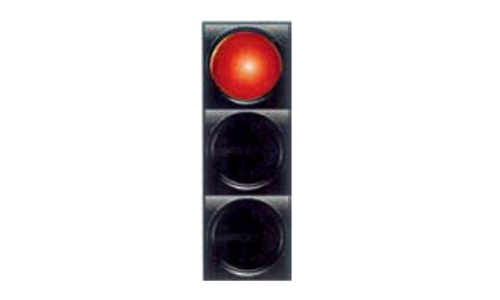
A steady red light means stop. The image clearly shows only the red signal illuminated, which requires all vehicles to halt before the stop line. You must wait until the light changes to green.

The amber light in the image warns drivers to stop unless you’re too close to stop safely. Sudden braking too close to the line could cause an accident, so you’re allowed to proceed in that case.

Even with a green light, the image reminds you to stay alert. It’s essential to check for pedestrians or vehicles that may not have cleared the intersection before you move.
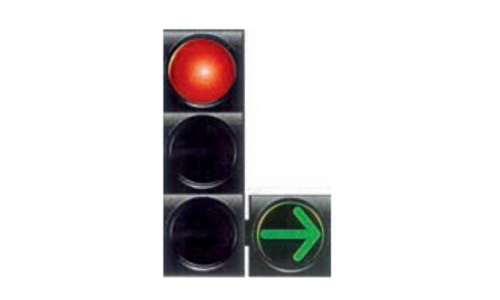
A green arrow only permits movement in the indicated direction. In this case, it’s pointing right, so it does not allow you to go straight. You must wait for the appropriate green signal that permits straight movement.
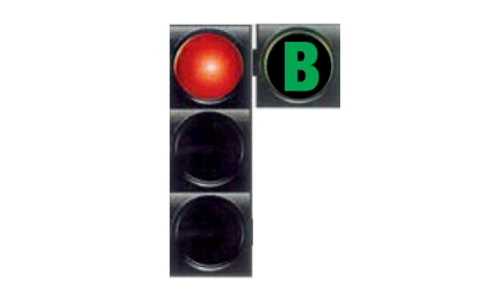
The green ‘B’ signal gives a dedicated go-ahead only to buses, helping them safely exit bus bays or side lanes.
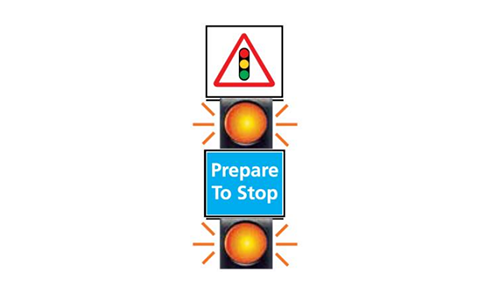
These are advanced warning lights used near bends with poor visibility. They alert drivers that traffic signals are ahead and they should reduce speed and prepare to stop safely.

A green arrow pointing right gives a clear signal to proceed in that direction. It means “GO” for a right turn.
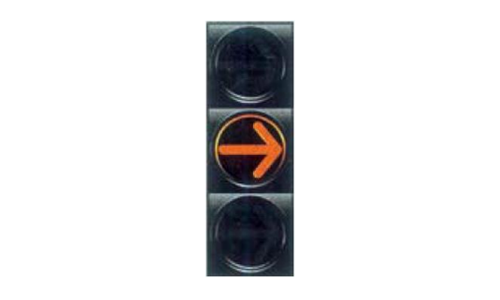
An amber arrow means the signal is about to change. Drivers should prepare to stop safely behind the stop-line.
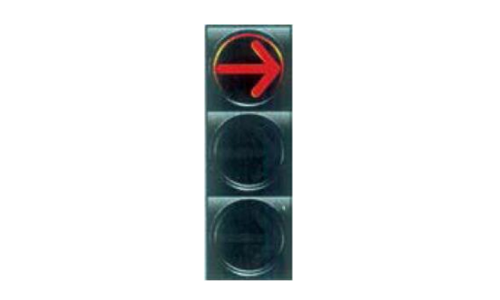
A red arrow means “STOP” in the indicated direction. Right turns are not allowed, even if the road looks clear.
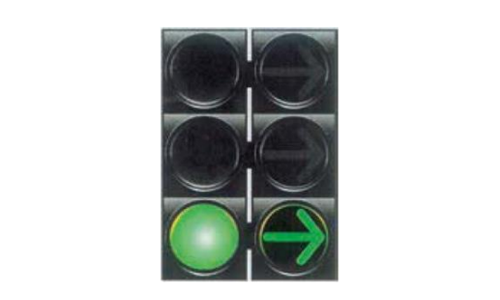
A green circle allows straight movement, and the green arrow explicitly permits right turns, so both actions are allowed.

The amber arrow means the signal is about to change to red, so right-turning drivers should get ready to stop.
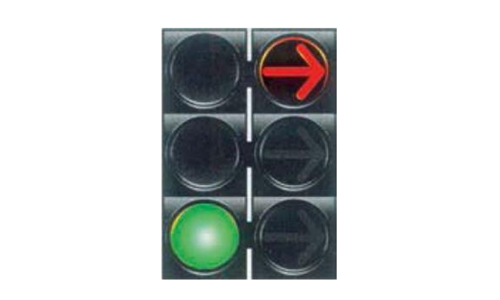
The green circle allows vehicles to go straight, but the red arrow specifically prohibits right turns, even if the way appears clear.
 Pass the Exam easily with Premium Practice Tests | Unlock All with 7 Days Plan
Pass the Exam easily with Premium Practice Tests | Unlock All with 7 Days Plan  Offer Ends in
Offer Ends in 
